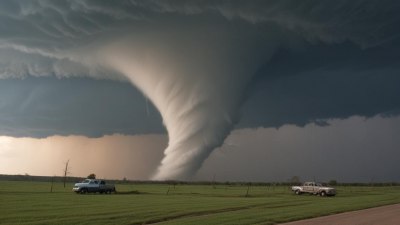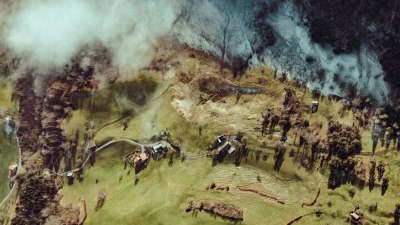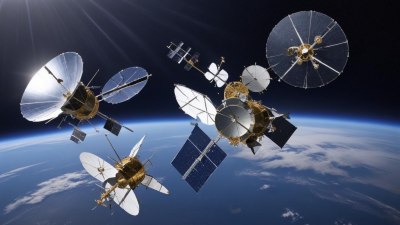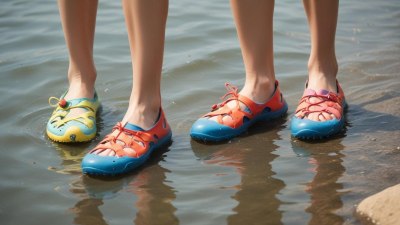The Wettest Places on Earth
Discover the world's most rain-soaked regions and their unique ecosystems.
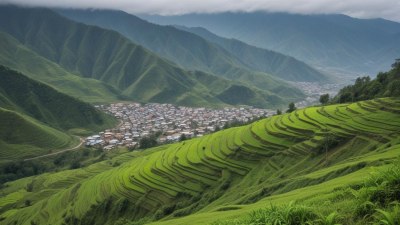
This image was created with the assistance of Freepik
Rain is a vital part of the Earth's climate system, nourishing the lands and supporting rich biodiversity. However, some places around the globe receive far more precipitation than others, making them the wettest regions on Earth. This article explores these extraordinary locations, delving into their climates, ecosystems, and unique characteristics.
1. Mawsynram, India
Located in the northeast Indian state of Meghalaya, Mawsynram holds the record for the highest average annual rainfall, measured at around 467.4 inches (about 467.4 cm). The heavy monsoon winds from the Bay of Bengal collide with the beautiful Khasi hills, resulting in relentless rain, particularly from June to September. This extraordinary precipitation creates a lush, green environment that is home to countless species of flora and fauna. The unique ecosystem is characterized by the growth of various plants, many of which are endemic to this region.
2. Cherrapunji, India
Just a short distance from Mawsynram is Cherrapunji, another township in Meghalaya known for its intense rainfall. Often cited interchangeably with Mawsynram, Cherrapunji has long been famous for its rain, with an average annual rate of 463.7 inches (about 471.3 cm). While Mawsynram is currently the rain champion, Cherrapunji was historically known as the wettest place on Earth. The rains have sculpted stunning natural features, including the Nohkalikai Falls, which cascade down from a great height, showcasing the powerful forces of nature.
3. Tutunendo, Colombia
Located near the city of Quibdó, Tutunendo receives an annual average rainfall of around 463 inches (approximately 1,175 cm). The town enjoys a tropical rainforest climate, providing a perfect habitat for extraordinary biodiversity. The frequent rainfall nourishes dense subtropical forests where unique wildlife flourishes, from vibrant bird species to various flora. The rainy environment supports an economy focused mainly on agriculture, with local farmers growing crops like bananas, cacao, and rubber.
4. Cropp River, New Zealand
The Cropp River, on the West Coast of New Zealand's South Island, is another contender on the list of the wettest places globally. With a staggering annual average of about 453.5 inches (approximately 1,200 cm) of rainfall, the region stands out for its lush landscapes and dense rainforests. The rainfall helps create a habitat rich in biodiversity, including rare species like the kiwi bird. The region's stunning scenery attracts tourists who are drawn to the breathtaking sights of the lush green hills, beautiful rivers, and spectacular waterfalls.
5. Debundscha, Cameroon
Debundscha, located at the base of Mount Cameroon, holds the record for one of the wettest places in Africa, receiving around 405.5 inches (approximately 1,030 cm) of rainfall each year. The specific geographical conditions that apply here include being positioned near the Atlantic Ocean, which allows moist air to flow in and result in heavy rainfall. The lush landscapes surrounding Debundscha are filled with diverse flora and fauna, contributing to a vibrant ecosystem that supports various agricultural activities, including coffee and banana cultivation.
6. Crooked River, New Zealand
Not far from the Cropp River is another significant site called the Crooked River, which also experiences extremely high rainfall levels, averaging about 452.9 inches (approximately 1,150 cm) annually. Often obscured by the mist, this location is famous for its incredible scenic beauty. The area features a diverse terrain filled with steep mountains, beautiful emerald forests, and a variety of river systems, making it a paradise for hikers and nature lovers. The region's climate supports rich biodiversity, with various species of plants and animals thriving in the moist environment.
7. San Antonio de Ureca, Equatorial Guinea
San Antonio de Ureca, located on the island of Bioko in Equatorial Guinea, becomes one of the wettest places on the planet by receiving an annual rainfall of around 463.4 inches (about 1,178 cm). The tropical climate and proximity to the Gulf of Guinea contribute to the high level of precipitation in this region. San Antonio de Ureca not only boasts stunning beaches but also a vibrant rainforest ecosystem filled with unique wildlife, including many endemic species. The local economy thrives on various activities, including agriculture and eco-tourism, making the best use of the region’s abundant natural resources.
8. Big Bog, Hawaii, USA
Big Bog, located on the Hawaiian island of Maui, stands out as the wettest place in the United States, receiving around 404.4 inches (approximately 1,028 cm) of rainfall yearly. As a high-elevation rainforest, Big Bog features lush vegetation, including giant ferns and moss-covered trees, with a unique ecosystem that supports many native Hawaiian species. The rainfall is vital to sustaining the rich biodiversity and distinctive habitats of the area, attracting numerous hikers and nature enthusiasts who come to explore its stunning landscapes.
9. Quibdó, Colombia
Quibdó, the capital of the Chocó Department in Colombia, experiences one of the highest rainfall rates globally, averaging around 463 inches (approximately 1,175 cm) annually. The city is remarkably wet and is often overshadowed by its stunning natural surroundings, which include rivers and lush jungles filled with colorful wildlife. The humid, tropical climate fosters an array of plant and animal species that thrive in the perennially moist environment, supporting an economy heavily reliant on agriculture, particularly the cultivation of palm oil and cocoa.
10. Big Island, Hawaii, USA
The Big Island of Hawaii, particularly the Hilo region, showcases an astonishing annual rainfall averaging around 126.7 inches (approximately 322 cm), demonstrating Hawaii's capacity for significant precipitation. The rain-fed landscape leads to stunning waterfalls, vibrant rainforests, and a landscape teeming with life. Hilo's incredibly green surroundings encourage tourism, as visitors flock to experience the natural beauty, warm climate, and the rich Hawaiian culture.
The world's wettest places reveal not only extreme weather patterns but also the extraordinary biodiversity that each of these regions supports. Rainfall is essential for maintaining ecosystems, and it serves as a reminder of the Earth's complex climatic systems. From the lush hills of Meghalaya to the dense forests of Colombia, these wet regions contribute to the planet's ecological tapestry, providing opportunities for research, tourism, and agriculture. As climate change continues to impact weather patterns globally, understanding these remarkable places becomes more critical than ever.


